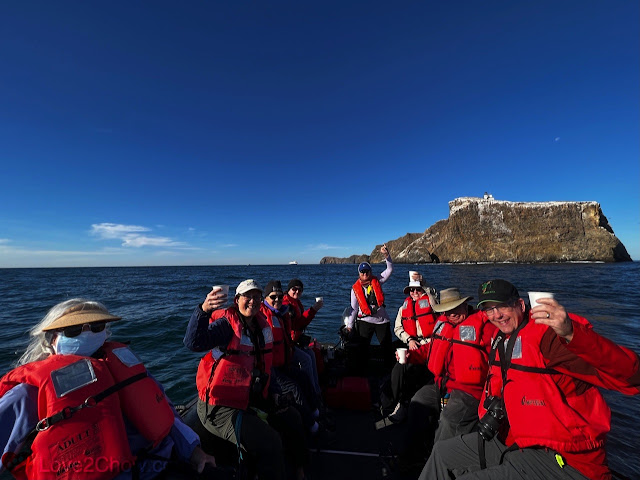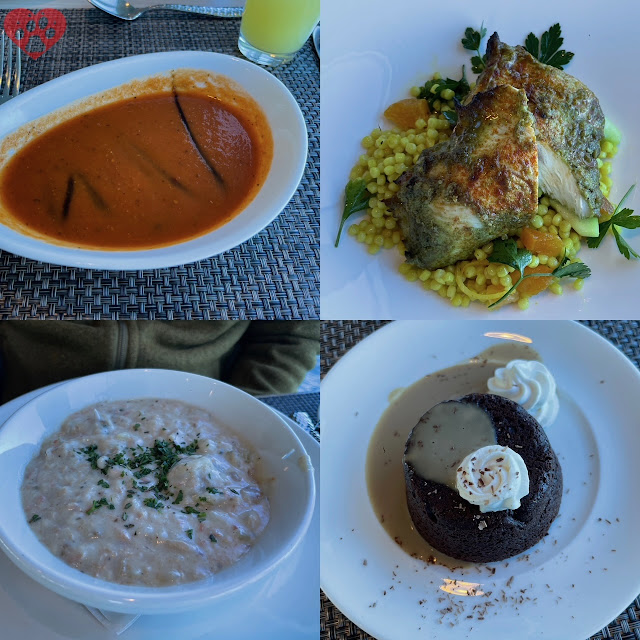Just off the coast of southern California lies a series of 8 small islands, five of which form the Channel Islands National Park. Anacapa Island is closest to Ventura, CA, about 12 miles off the coast. And the multiple flights of California brown pelicans coming out to sea at dawn are a dramatic testament to the success of Pittsburgher Rachel Carson's impact in rescuing wild birds. We enjoyed a beautiful Zodiac raft trip past colonies of playful sea lions, Arch Rock, the only brown pelican nesting site in North America, waving amber-brown strands of giant kelp. While we enjoyed mobile bar service by raft up above, a diving team was down below producing a video of life below the surface. We returned to learn more about the first humans to dwell in these islands, followed by a fantastic lunch on board the Lindblad/National Geographic Venture.
 |
| Dawn over east Anacapa Island. |
 |
| The National Geographic Venture from a Zodiac raft |
 |
| One of many playful sea lions of Anacapa Island |
Click here to read about short (<3 miles) Southern California Hikes with Santa Catalina Views
Click here for Channel Islands Cruise Day 1. Embarkation, Dolphins & Moonrise
Click here for Channel Islands Cruise Day 2b. Santa Cruz Hike & Fox
Click here for Channel Islands Cruise Day 3. Santa Rosa Torrey Pines Hike
Click here for Channel Islands Cruise Day 4. Santa Catalina Two Harbors & Avalon
Sunrise by Anacapa
 |
| The dawn sky looking east with the double peak of Catalina and flatter Santa Barbara islands just visible at the horizon |
Pre-breakfast and Breakfast
Zodiac Rafting
Brown Pelican Rookery
A Toast to the Arch
Sea Lion Acrobatics
The Kelp Down Under
Lunching with Dolphins
Click here to read about short (<3 miles) Southern California Hikes with Santa Catalina Views
Click here for Channel Islands Cruise Day 1. Embarkation, Dolphins & Moonrise
Click here for Channel Islands Cruise Day 2b. Santa Cruz Hike & Fox
Click here for Channel Islands Cruise Day 3. Santa Rosa Torrey Pines Hike
Click here for Channel Islands Cruise Day 4. Santa Catalina Two Harbors & Avalon
All Rights Reserved. Contact admin@love2chow.com for permissions.



































0 comments